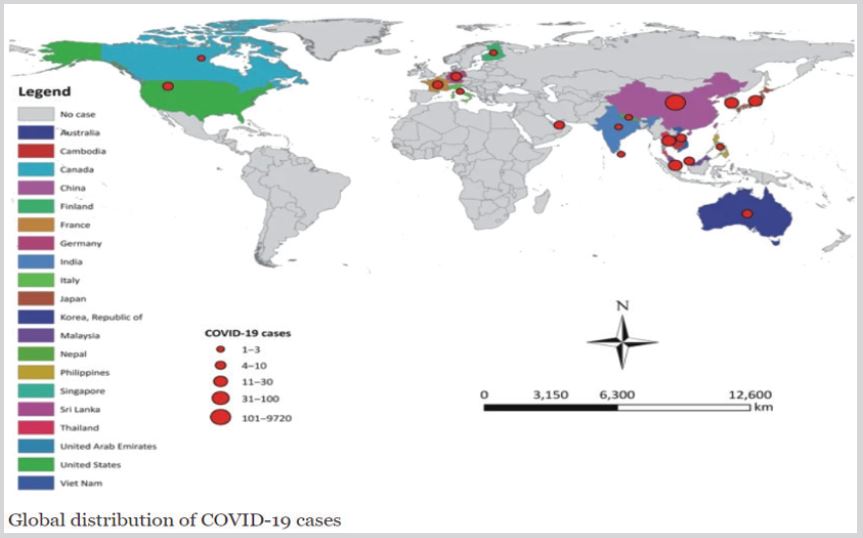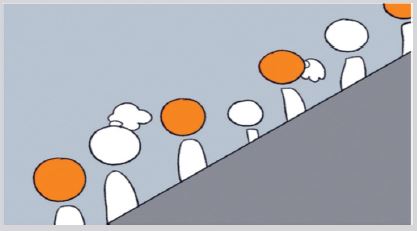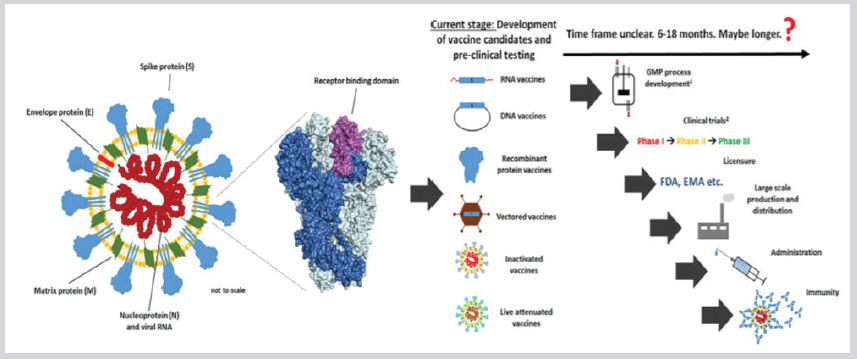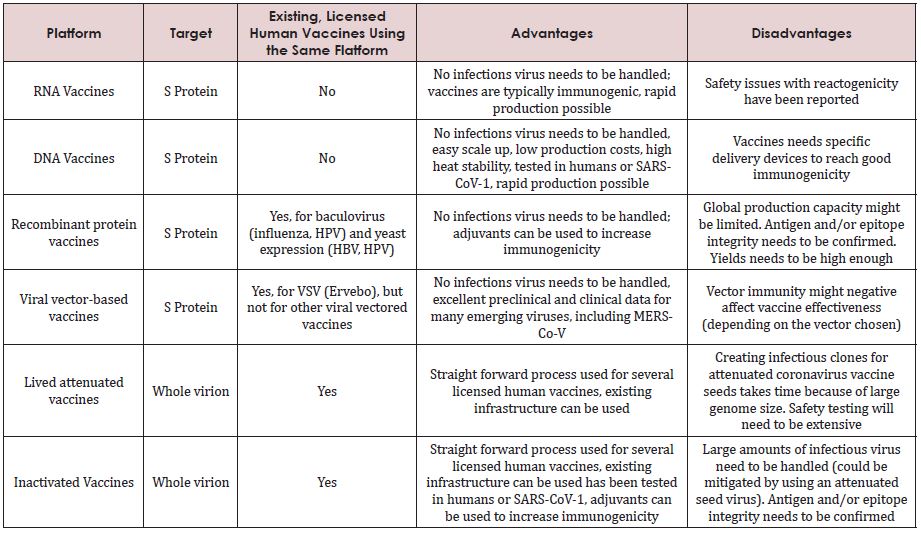COVID-19 Pandemic and Public health Preventions to Reduce the Infection, Incidence and Distribution among the Community
ABSTRACT
Background and Objective: The Author of this Article wants to show the importance of the Public Health
Intervention, Preventions against the COVID-19 novel corona virus. The use of WHO methods of Preventions such
as Isolation & Quarantine, Using PPE, washing hands regularly, Cover the mouth during cough would help to control
COVID-19 Pandemic.
Methods: The Author of this article has randomly selected 15 Articles from PUBMED and other sources on net
with the word using “Public Health Preventions for COVID-19”. The Author relies on Conceptual Literature Review
for the Methodology of this article. Where the groups of Articles are reviewed and analysed to find out the answer
of the Question “Study favor or Ignores the Public Health Preventions to reduce the Infection in the Article”. The
Table 1 is created to Analyse the 15 randomly selected Articles and the results has been presented By SPSS software
diagrammatic presentation.
Results: According to the SPSS Diagrammatic presentation, the results of 15 randomly selected articles indicates
that all 15 articles favor Public Health Preventions to reduce the COVID-19 Infection. Secondly, 10 articles agreed
100% on Public Health Preventions to reduce the COVID-19 Infection in the community and 5 articles shows lower
percentages. The given Table 1 clearly gives the information and references of 15 randomly selected articles for the
study discussed here “Study favor or Ignores the Public Health Preventions to reduce the Infection in the Article”.
Conclusion: Global Health and other organizations such as WHO, UNHCR, UN, UNESCO, UNICEF did not act fast to
Prevent and Control the COVID-19 Pandemic. Other Governments of the countries in the world act very slowly for the
warnings given by WHO and other scientists. Later since November 2019 till now approximately 350,000 people have
lost their lives due to COVID-19 and approximately 5 Million people are infected by this COVID-19 disease. Lessons
should learn from COVID-19 Pandemic and it is not over yet as scientists predicts that COVID-19 is with us for next
couple of years. The vaccine of COVID-19 is under development and there is not exact treatment for COVID-19 by
medical sciences till now.
KEYWORDS
COVID-19; Causes; Epidemiology; Prevention and control; Review; Community; Prevention; Quarantine; Social distancing; Turkey; Antibodies; SARS-CoV-2; Glycans; Immunoglobulin M; Pneumonia; Prediction; Protection; World health organization; Digital media; Infodemic; Infodemiology
INTRODUCTION
The UK government Richard [1] has a duty to protect the health of the public under article 11 of the European Social Charter 1961 Council of Europe 1961. This requires measures such as the removal of the causes of ill health education to promote health and encouragement of individual responsibility for health. Three sets of regulations complement the amended Act: 1) Health Protection (Notification) Regulations 2010 updated the system of notification. 2) Health Protection Local Authority Powers Regulations 2010 updated the powers and duties of local authorities in relation to protecting the public from infection or contamination. 3) Health Protection Part 2A Orders Regulations 2010 allow local authorities to obtain an order Part 2A Order from a Justice of the Peace that impose restrictions or requirements to protect the health of the public. The Public Health Richard [1] control of disease Act 1984 (as amended) protects the health of the public through a system of surveillance and action.
The WHO declared the COVID-19 outbreak Rahmet [2] a public health emergency of international concern and in March 2020 began to characterize it as a pandemic in order to emphasize the gravity of the situation and urge all countries to take action in detecting infection and preventing spread. Unfortunately, there is no medication that has been approved by the FDA gone through controlled studies and demonstrated an effect on the virus for this global pandemic. Although there are cures for illnesses and developments made by leaps and bounds in our day the strongest and most effective weapon that society has against this virus that is affecting not just health but also economics politics and social order is the prevention of its spread. The main points in preventing the spread in society are hand hygiene, social distancing and quarantine. With increased testing capacity detecting more COVID-19 positive patients in the community Rahmet [2] will also enable the reduction of secondary cases with stricter quarantine rules.
Several Italian towns Henrik [3] are under lockdown to contain the COVID-19 outbreak. The level of transmission reduction required for physical distancing interventions to mitigate the epidemic is a crucial question. We show that very high adherence to community quarantine total stay home policy and a small household size is necessary for curbing the outbreak in a locked downtown. The larger the household Henrik [3] size and amount of time in the public the longer the lockdown period needed.
In this scoping review 65 research articles Sasmita [4] published before 31 January 2020 were analysed and discussed to better understand the epidemiology causes clinical diagnosis prevention and control of this virus. Research articles initially focused on causes but over time there was an increase of the articles related to prevention and control. Studies thus far have shown that the virus origination is in connection to a seafood market in Wuhan, but specific animal associations have not been confirmed. Reported symptoms include fever, cough, fatigue, pneumonia, headache, diarrhoea, haemoptysis, and dyspnoea. Preventive measures such as masks hand hygiene practices, avoidance of public contact, case detection, contact tracing, and quarantines have been discussed as ways to reduce transmission. To date no specific antiviral treatment has Sasmita [4] proven effective hence infected people primarily rely on symptomatic treatment and supportive care (Figure 1,2).
The review summarizes current strategies Mahdi [5] on the diagnosis. Additionally, treatments infection prevention and control of the SARS-CoV-2 are addressed. In addition to the respiratory system this virus can infect the digestive system the urinary system and the hematological system which causes to observe the virus in the stool urine and blood samples in addition to throat sample. The SARS-CoV-2 causes changes in blood cells and factors and makes lung abnormalities in patients which can be detected by serological molecular and radiological techniques by detecting these changes and injuries. Radiological and serological methods are the most preferred among the other methods and the radiological method is the most preferred one which can diagnose the infection quickly and accurately with fewer false-negatives that can be effective in protecting the patient’s life by initiating treatment and Mahdi [5] preventing the transmission of infection to other people.
The outbreak of emerging Yuefei [6] severe acute respiratory syndrome coronavirus 2 SARS-CoV-2 disease in China has been brought to global attention and declared a pandemic by the World Health Organization. Scientific advancements since the pandemic of severe acute respiratory syndrome in 2002-2003 and Middle East respiratory syndrome in 2012 have accelerated our understanding of the epidemiology and pathogenesis of SARS-CoV-2 and the development of therapeutics to treat viral infection. As no specific therapeutics and vaccines are available for disease control the epidemic of COVID-19 is posing a great threat for global public health. To provide a comprehensive summary to public health authorities and potential Yuefei [6] readers worldwide we detail the present understanding of COVID-19.
METHODS
The Author of this article has randomly selected 15 Articles from PUBMED and other sources on net with the word using “Public Health Preventions for COVID-19”. The Author relies on Conceptual Literature Review for the Methodology of this article. Where the groups of Articles are reviewed and analyzed to find out the answer of the Question “Study favors or Ignores the Public Health Preventions to reduce the Infection in the Article”. The Table 1 is created to Analyze the 15 randomly selected Articles and the results has been presented By SPSS software diagrammatic presentation. There are Grant [7] many different types of literature reviews each with its own approach analysis and purpose. To confuse matters these types aren’t named consistently. The Conceptual Review groups articles according to concepts or categories, or themes. It identifies the current understanding of the given research topic discusses how this understanding was reached and attempts to determine Grant [7] whether a greater understanding can be suggested.
The challenge and opportunity Maya [8] during the current COVID-19 pandemic crisis is to create content that can be rapidly deployed globally so is linguistically and culturally agnostic while remaining engaging enough to reach a variety of audiences. As a health issue COVID-19 presents an extra challenge because many in the general public do not view it as potentially affecting their own lives because the virus is thought to be geographically distant or only likely to affect the medically frail. For our video intervention we chose key messages based on the WHO recommendations and focusing on (a) how the novel corona virus is spread and (b) what can be done to stop the spread. We focused on evergreen messaging information that was unlikely to change and could thus be impactful throughout the pandemic. These included frequent Maya [8] handwashing, social distancing, avoiding touching your face with your hands, and self-isolating when sick (Figure 3) & (Table 1).
We propose here the first model explaining Paolo [9] the outcome of first crucial 10-15 days after infection hangs on the balance between the cumulative dose of viral exposure and the efficacy of the local innate immune response (natural IgA and IgM antibodies, Mannose Binding Lectin). If SARS-CoV-2 runs the blockade of this innate immunity and spreads from the upper airways to the alveoli in the early phases of the infections it can replicate with no local resistance causing pneumonia and releasing high amounts of antigens. The delayed and strong adaptive immune response high affinity IgM and IgG antibodies that follows causes severe inflammation and triggers mediator cascades complement, coagulation, and cytokine storm leading to complications often requiring intensive therapy and being in some patients fatal. whether the virus or the adaptative immune response reach the lungs first is a crucial factor deciding the fate of the patient. This quantitative and time sequence dependent model has Paolo [9] several implications for prevention diagnosis and therapy of COVID-19 at all ages.
Measure and statistical Analysis: IBM (2006) IBM SPSS Software:
1: SPSS Diagram 1: Study favors or Ignores Public Health
Preventions to reduce the Infection (Figure 4)
2: SPSS Diagram 2: Percentage agreed of the Public Health
Preventions to reduce the Infection (Figure 5)
RESULTS
According to the SPSS Diagrammatic presentation, the results of 15 randomly selected articles indicates that all 15 articles favor Public Health Preventions to reduce the COVID-19 Infection. Secondly, 10 articles agreed 100% on Public Health Preventions to reduce the COVID-19 Infection in the community and 5 articles shows lower percentages. The given Table 1 clearly gives the information and references of 15 randomly selected articles for the study discussed here “Study favors or Ignores the Public Health Preventions to reduce the Infection in the Article”.
COVID-19 is caused by SARS-COV2 Hussin [10] and represents the causative agent of a potentially fatal disease that is of great global public health concern. Based on the large number of infected people that were exposed to the wet animal market in Wuhan City China, it is suggested that this is likely the zoonotic origin of COVID-19. Person-to-person transmission of COVID-19 infection led to the isolation of patients that were subsequently administered a variety of treatments. Extensive measures to reduce personto- person transmission of COVID-19 have been implemented to control the current outbreak. Special attention and efforts to protect or reduce transmission should be applied in Hussin [10] susceptible populations including children health care providers and elderly people.
The world has been thrown into pandemonium Idris [11] due to the recent Coronavirus Disease-19 pandemic. Early available clinical data have indicated that geriatric persons cum those with comorbidity such as cardiovascular metabolic and immunological disorders suffered severe form of COVID-19. All countries and territories of the world are currently exploring available strategies to control the pandemic with the hope to significantly minimize its morbidity and mortality rate. This present study critically reviewed available and latest research progress on the genetics and ecology of SARS-CoV-2 as well as the influence of climatic factors on the spread of COVID-19 and thus discussed how these concepts could be harnessed for COVID-19 control and further Idris [11] scientific advancements in resolving the pandemic.
With over 2 billion users YouTube Corey [12] is a media channel that millions turn to when seeking information. The 100 most widely viewed YouTube videos uploaded throughout the month of January 2020 were reviewed and the content covered was described. Collectively these videos were viewed over 125 million times. Fewer than one third of the videos covered any of the sevenkey prevention behaviours listed on the US Centers for Disease Control and Prevention website. These results Corey [12] represent an important missed opportunity for disease prevention.
Public health measures Smith [13] were decisive in controlling the SARS epidemic in 2003. Isolation is the separation of ill persons from non-infected persons. Quarantine is movement restriction often with fever surveillance of contacts when it is not evident whether they have been infected but are not yet symptomatic or have not been infected. Community containment includes measures that range from increasing social distancing to community wide quarantine. Whether these measures will be sufficient to control 2019-nCoV depends on Smith [13] addressing some unanswered questions.
DISCUSSION
An investment Fatima [14] of a few billion dollars would allow us to have sufficient surveillance, appropriate vaccine candidates, and infrastructure ready that could churn out vaccines for use in the global population quickly and effectively potentially stopping an emerging virus in its tracks. In addition, we need well developed emergency plans that allow us to develop, test, produce and distribute vaccines within weeks not months or years. For SARSCoV- 2 vaccines might come too late to affect the first wave of this pandemic. However, they might be useful if additional waves occur later or in a post pandemic scenario in which SARS-CoV-2 continues to circulate as a seasonal virus. In addition, lessons learned from handling this outbreak will allow us to be better prepared Fatima [14] in the future. The viruses will keep coming (Figure 6) & (Table 2).
The COVID-19 outbreak has the Samuel [15] potential to become a global pandemic. Containment of the outbreak requires the best of public health actions and skills. Missteps will occur because of the human nature of both those infected and the health responders themselves. Important for all who are providing health and medical services during this event is to recognize the broad impact of such a disease outbreak. It is necessary to understand the concerns of those who must support the efforts to contain the outbreak including the political economic and social impacts of each action taken in the overall effort to Samuel [15] support global security in relation to COVID-19.
This new species of coronavirus Palacios [16] has been termed 2019-nCoV and has caused a considerable number of cases of infection and deaths in China and to a growing degree beyond China becoming a worldwide public health emergency. 2019-nCoV has high homology to other pathogenic coronaviruses such as those originating from bat related zoonosis SARS-CoV which caused approximately 646 deaths in China at the start of the decade. The mortality rate for 2019-nCoV is not as high approximately 2-3% but its rapid propagation has resulted in the activation of protocols to stop its spread. This pathogen has the potential to become a pandemic. It is therefore vital to follow the Palacios [16] personal care recommendations issued by the World Health Organization.
The COVID-19 pandemic Felipe [17] has brought major challenges to healthcare systems and public health policies globally as it requires novel treatment and prevention strategies to adapt for the impact of the pandemic. Individuals with substance user disorders SUD are at risk population for contamination due to multiple factors attributable to their clinical psychological and psychosocial conditions. In addition, this population are potential vectors of transmission. In that sense specific strategies for prevention and treatment must be discussed. health care professionals dealing with SUD must be aware of the risks and challenges they will meet during and after the COVID-19 outbreak. Addiction care must be reinforced instead of postponed to avoid complications Felipe [17] of both SUD and COVID-19 and to prevent the transmission of coronavirus.
Since most affected patients Jean-François [18] have mild to no symptoms it remains crucial to quickly relate any commonly observed symptoms and to do so widely. Cough fever and/or trouble breathing are the major symptoms that have been publicly communicated in a consistent manner. One of the authors Jean‐ François Gautier an endocrinologist in Paris his recent interactions with patients and other doctors have rapidly led to the realization that sudden loss of smell anosmia and/or taste ageusia may be experienced in the infected. Yet it is slowly emerging that these symptoms are quite common. Anosmia has been reported to be found in upwards of 2/3 of patients in Germany by epidemiologist Hendrik Streek while Italian and Swiss doctors are reporting similar Jean-François [18] findings with many also displaying ageusia.
Drugs are urgently Chris [19] needed for both prophylaxis and the treatment of severely ill patients however no proven effective therapies for SARS-CoV-2 currently exist. Several drugs that have been approved for other diseases are being tested for the treatment of COVID-19 patients. But there is an absence of data from appropriately designed clinical trials showing that these drugs either alone or in combination will prove effective. There is also a global urgency to develop a vaccine against COVID-19, but development and appropriate testing will Chris [19] take at least a year before such a vaccine will be globally available.
The internet is a large source Ignacio [20] of health information and has the capacity to influence its users. However, the information found on the internet often lacks scientific rigor as anyone may upload content. It is necessary to urge and promote the use of the websites of official public health organizations when seeking information on COVID-19 preventive measures on the internet. In this way, users will be able to obtain high-quality information more frequently, and such websites may improve their Ignacio [20] accessibility and positioning.
CONCLUSION
Global Health and other organizations such as WHO, UNHCR, UN, UNESCO, UNICEF did not act fast to Prevent and Control the COVID-19 Pandemic. Other Governments of the countries in the world act very slowly for the warnings given by WHO and other scientists. Later since November 2019 till now approximately 350,000 people have lost their lives due to COVID-19 and approximately 5 Million people are infected by this COVID-19 disease. Lessons should learn from COVID-19 Pandemic and it is not over yet as scientists predicts that COVID-19 is with us for next couple of years. The vaccine of COVID-19 is under development and there is not exact treatment for COVID-19 by medical sciences till now.
REFERENCES
- Richard G (2020) Using public health law to contain the spread of COVID-19. British Journal of Nursing 29(5): 326-327.
- Rahmet G, Imran H, Firdevs A (2020) COVID-19: prevention and control measures in community. Turkish Journal of Medical Sciences 50(SI-1): 571-577.
- Henrik S, Annelies S, Sarah O (2020) Only strict quarantine measures can curb the coronavirus disease (COVID-19) outbreak in Italy, 2020. Euro surveillance Europe’s journal on infectious disease surveillance 25(13): 2000280.
- Sasmita A, Sha M, Yu JW (2020) Epidemiology, causes, clinical manifestation and diagnosis, prevention and control of coronavirus disease (COVID-19) during the early outbreak period: a scoping review. BMC Infectious Disease of Poverty 9(1): 29.
- Mahdi O, Parham M, Ehsaneh K (2020) Clinical manifestation, diagnosis, prevention and control of sars-cov-2 (COVID-19) during the outbreak period. Le Infizioni in Medicina 28(2): 153-165.
- Yuefei J, Haiyan Y, Wangquan Ji (2020) Virology, epidemiology, pathogenesis and control of COVID-19. MDPI Journals Viruses 12(4): 372.
- Grant MJ, Booth A (2009) A typology of reviews: an analysis of 14 review types and associated methodologies. Health Information & Libraries Journal 26(2): 91-108.
- Maya A, Till B, Shannon AM (2020) Design for extreme scalability: A wordless, globally scalable COVID-19 prevention animation for rapid public health communication. Journal of Global Health 10(1): 010343.
- Paolo M, Roberto N, Roberto N (2020) The first, holistic immunological model of COVID-19: implications for prevention, diagnosis, and public health measures. Wiley Pediatric allergy and immunology.
- Hussin R, Siddappa B (2020) The epidemiology and pathogenesis of coronavirus disease (COVID-19) Outbreak. ELSEVIER Journal of Autoimmunity 109: 102433.
- Idris A, Anthony E, Jelili M (2020) Exploring the genetics, ecology of SARS-COV-2 and climatic factors as possible control strategies against COVID-19. Le Infizioni in Medicina 28(2): 166-173.
- Corey HB, Grace CH, Zoe CE (2020) Preventive behaviors conveyed on you tube to mitigate transmission of COVID-19: cross-sectional study. JMIR Public Health and Surveillance 6(2): e18807.
- Smith A, Freedman D (2020) Isolation, quarantine, social distancing and community containment: pivotal role for old-style public health measures in the novel coronavirus (2019-nCoV) outbreak. Journal of Travel Medicine 27(2): taaa020.
- Fatima A, Florian K (2020) SARS-CoV-2 vaccines: status report. Immunity Perspective 52(4): 583-589.
- Samuel JS (2020) COVID-19: not a simple public health emergency. Cambridge University Press, Prehospital and Disaster Medicine 35(2): 119.
- Palacios CM, Santos E, Velázquez C (2020) COVID-19, a worldwide public health emergency. ELSEVIER Revista Clínica Española S0014-2565(20): 30092-30098.
- Felipe O, Helena M, Juliana S (2020) The COVID-19 pandemic and its impact on substance use: implications for prevention and treatment. ELSEVIER Psychiatry Research 289: 113096.
- Jean FG, Yann R (2020) A new symptom of COVID-19: loss of taste and smell. Wiley OBESITY A Research Journal 28(5): 848.
- Chris RT, Devendra B, Elmoubasher AF (2020) COVID-19: learning from lessons to guide treatment and prevention interventions. Msphere an Open Access Journal 5(3): e00317-e00320.
- Ignacio HG, Teresa GJ (2020) Assessment of health information about COVID-19 prevention on the internet: infodemiological study. JMIR Public Health and Surveillance 6(2): e18717.
Article Type
Research Article
Publication history
Received date: May 21, 2020
Published date: June 08, 2020
Address for correspondence
Ahsan Ali Siddiqui, MD, MSPH, UK, Consultant Public Health, Quality Management & Patient Safety Department, General Directorate of Health, Riyadh Saudi Arabia
Copyright
©2020 Open Access Journal of Biomedical Science, All rights reserved. No part of this content may be reproduced or transmitted in any form or by any means as per the standard guidelines of fair use. Open Access Journal of Biomedical Science is licensed under a Creative Commons Attribution 4.0 International License
How to cite this article
Ahsan Ali Siddiqui, MD, MSPH, UK. COVID-19 Pandemic and Public health Preventions to Reduce the Infection, Incidence and Distribution among the Community. 2020 - 2(3) OAJBS.ID.000178.
Figure 1: Sasmita [1].
Figure 2: Sasmita [1].
Figure 3: Maya [8].
Figure 4: Study favor or ignores public health preventions to reduce the infection.
Figure 5: Percentage agreed of the public health preventions to reduce the infection.
Figure 6: Fatima [14].
Table 1: 15 Randomly selected articles to show focus on public health preventions to reduce the infection, incidence and distribution among the community.
Table 2: Overview of vaccine production platforms and technologies for SARS-CoV-2.










